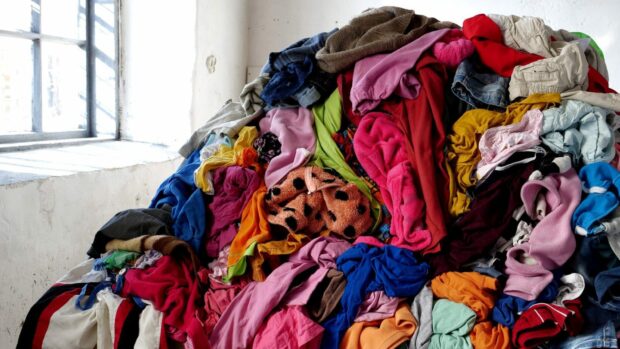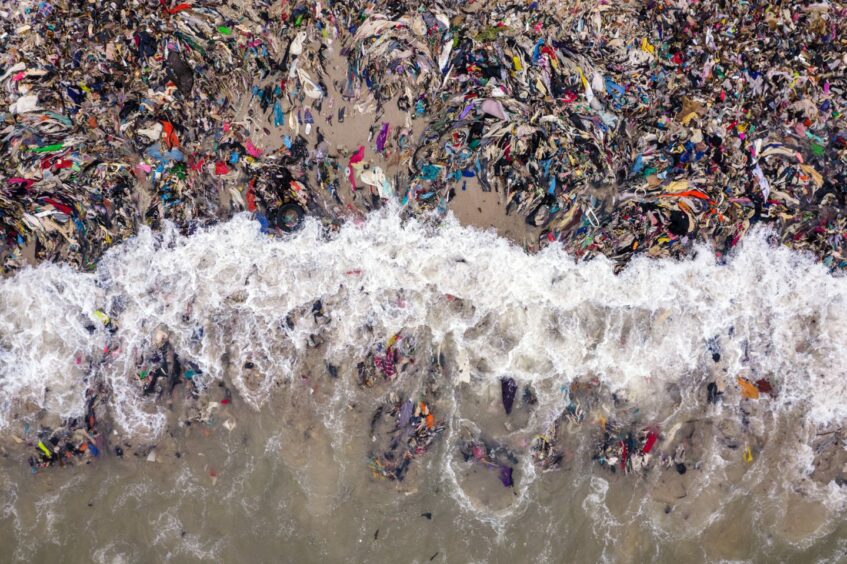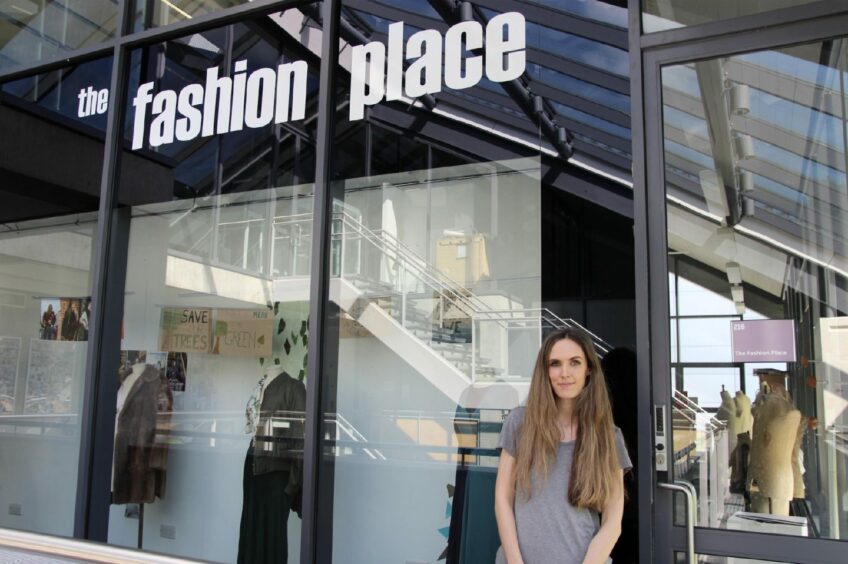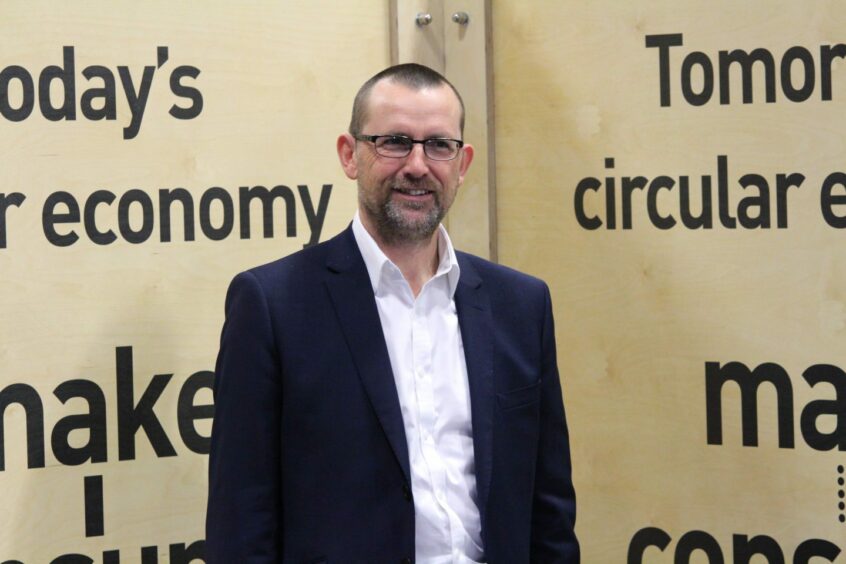A top that would have cost more to return than it did to buy, clothes that lasted just one wear, or looked nothing like the image online are in an overflowing bag I’ve got waiting to dispose of.
Hopefully my bag of what’s turned out to be rather costly “bargains” can be recycled or repurposed in some way.
Clothing from fast fashion outlets and websites have become increasingly popular – who can resist a new top for £5? I know I find it difficult to, and neither can millions of others across the country and the world.
Previous figures published by Oxfam indicate that 13 million items of clothing are sent to landfill a week.
A report earlier this year from Zero Waste Scotland revealed clothing is contributing more to climate change than plastic – accounting for nearly a third (32%) of the carbon impacts of Scotland’s household waste
But what impact does the throwaway clothing culture have, and how can we be more sustainable with what we wear?
I spoke to a lecturer from the Robert Gordon University and the chief executive of Zero Waste Scotland to find out more.
Dr Madeleine Marcella-Hood, lecturer in fashion management
As fashion and styles alter and evolve people in turn change their clothing in response – but this has increased dramatically Madeleine said.
She explained: “In recent years this change has accelerated at such a rate that it’s become a critical problem. As a business model, fast fashion generally relies on cheap labour, global supply chains and the promotion of garments that are essentially disposable – encouraging consumers to buy often through a variety of strategies – this has caused many consumers to place a very low value on clothing.
“Fast fashion garments are trend led and not always made to last, which has resulted in a wear-it-once (or sometimes not at all) attitude; ultra-fast fashion is now an industry-recognised term, which is associated with some of the most problematic examples.
“Statistics show that, where an average fashion trend used to last around 6-12months, there are now as many as 52 micro trends in a year – much of which are driven by ultra-fast fashion retailers and social media.”
A need for change
Despite the volumes fast fashion that are purchases, there has been a growing awareness of the need for sustainability not only from consumers but brands also.
A number of students at RGU were recently involved in setting up an ethical and sustainable fashion range, and the university has also had students working as ambassadors for initiatives like Fashion Revolution – a global movement for the industry, for a number of years now.
Madeleine said: “There’s a recognised need for change and for this change to be deep rooted. Our students are increasingly interested and engaged in issues surrounding the environment and sustainability is embedded across the subjects we teach. Gen Z, in particular, are recognised as environmentally conscious.
“However, research suggests there’s still an attitude/behaviour gap when it comes to clothing – fast fashion is readily available, inexpensive and often targeted towards fashion-conscious consumers and younger audiences.”
There are steps we can take to be more sustainable about our clothing, such as borrowing an outfit from a friend or mending and upcycling clothes.
Madeleine added: “As consumers generally we need to buy fewer items of clothing and place a higher value on the clothing we do buy. It’s unrealistic to expect consumers to switch off completely to less sustainable brands and some (though definitely not all) of these businesses are making progress towards becoming more sustainable.
“However, as consumers we can shop more consciously and make more sustainable choices – e.g. there’s lots of great charity shops in and around Aberdeen and second-hand clothing is a good alternative to buying directly from fast fashion retailers. For consumers who prefer to shop online there are second-hand social marketplaces like Vinted and Depop.”
Iain Gulland, Chief Executive, Zero Waste Scotland
Zero Waste Scotland’s Carbon Metric Report findings suggest only 5% of North-east residents are aware that clothing is the worst type of waste for the climate – with 67% saying it’s plastic.
While only 10% say they think about the environmental impact of a garment before they buy it.
The average Scot consumes more than twice the sustainable amount of materials per year. Meanwhile, only a fifth of people in Scotland are fully aware of the negative environmental impacts of our consumption of new products.
The environmental impacts extend beyond disposing of an item, as the resources and effort that goes into making them also wasted. This includes things such as growing the fibres for the materials, manufacturing, packaging and transport.
‘Scale of the problem is staggering’
Zero Waste Scotland’s Iain Gulland said: “Of everything we dispose of from our homes in Scotland, clothing is the worst for the climate. That’s a scary fact, but it’s also empowering because it identifies something we can all do to help tackle climate change: rethink how we buy and use clothes.
“For many of us actions like taking our own bags to the shops and using a reusable coffee cup or water bottle are now second nature. But lots of us aren’t fully aware of the link between clothing and climate change – or how overconsuming more generally contributes to the climate crisis.
“The scale of the problem is staggering; the average Scot consumes more than twice the sustainable amount of materials per year. It’s vital we turn that around if we’re serious about mitigating the worst effects of climate change.”
“The best way to do that is to curb our consumption – buying less in the first place and opting for alternatives to brand new goods.”
In a survey of 1,000 people Zero Waste Scotland asked people what they do with clothes they no longer want to wear – 76% said they donate them to charity, 33% said they take them to a textiles recycling collection point. The north-east figures were 78% and 34%.
In the same survey just over half of the respondents indicated that buying fewer clothes is something they were open to.
What’s being done to help the circular economy?
The circular economy works to keep items in use for as long as possible using methods such as sharing, leasing, reusing and recycling.
The Scottish Government’s Circular Economy Bill is expected to be laid in parliament later this year. The bill will aim to develop the country’s circular economy so there is a more efficient use of resources.
A Share and Repair Network of sharing libraries and repair projects has been established across the country.
It aims to support existing initiatives and encourage the establishment of new ones. It’s just one year old, but already has 50 active projects sharing or repairing, 83 groups as network members.
Other schemes include the Circular Arts Network (CAN) – a recycling and reuse tool that gives users access to affordable materials for creative projects.



